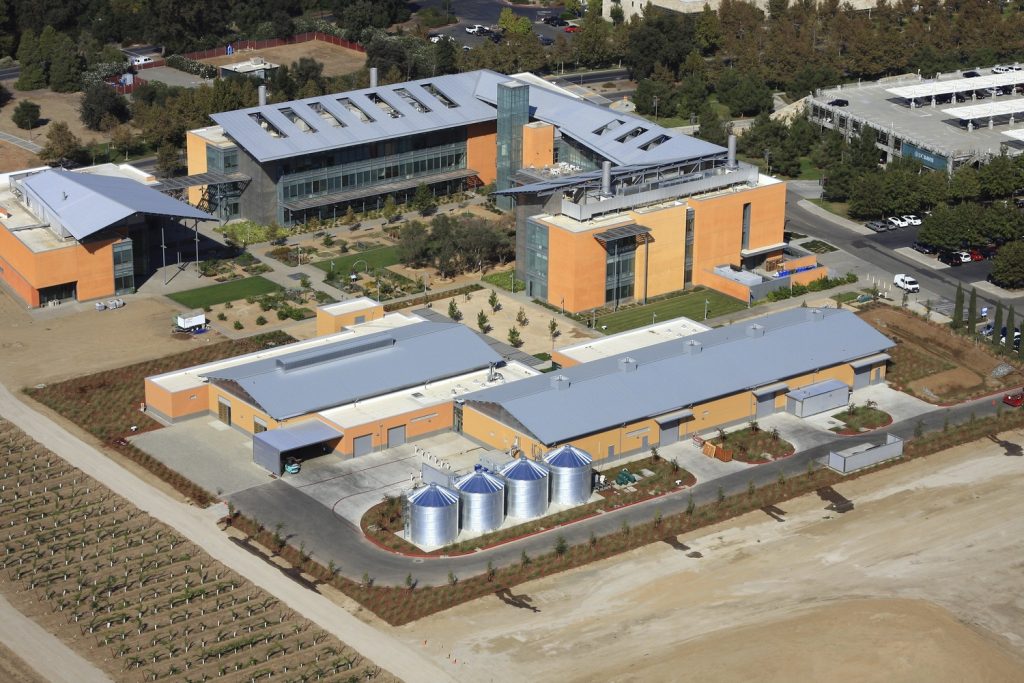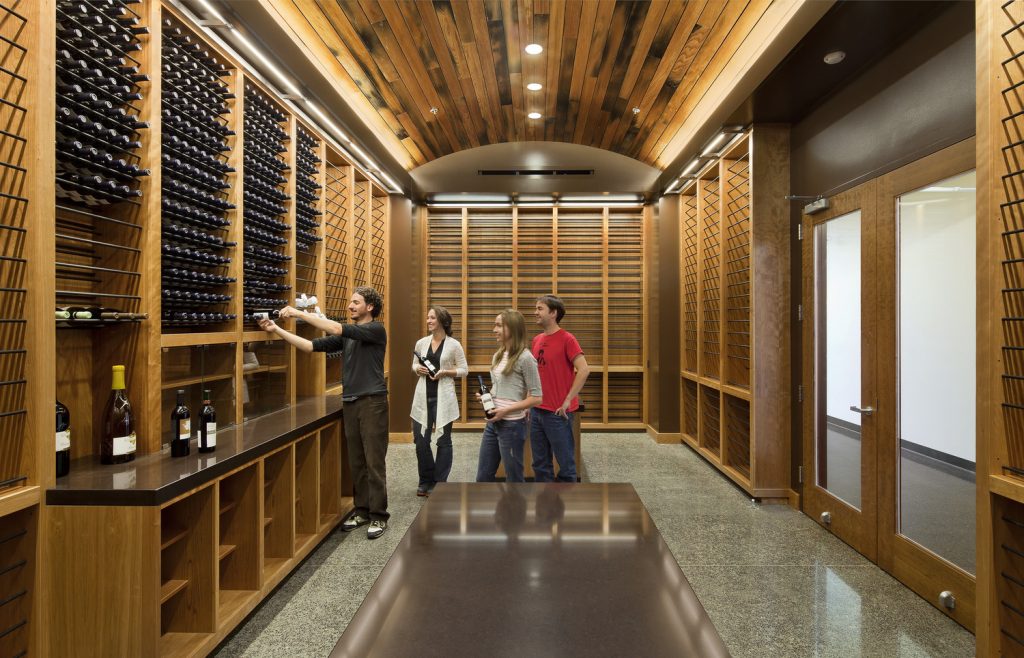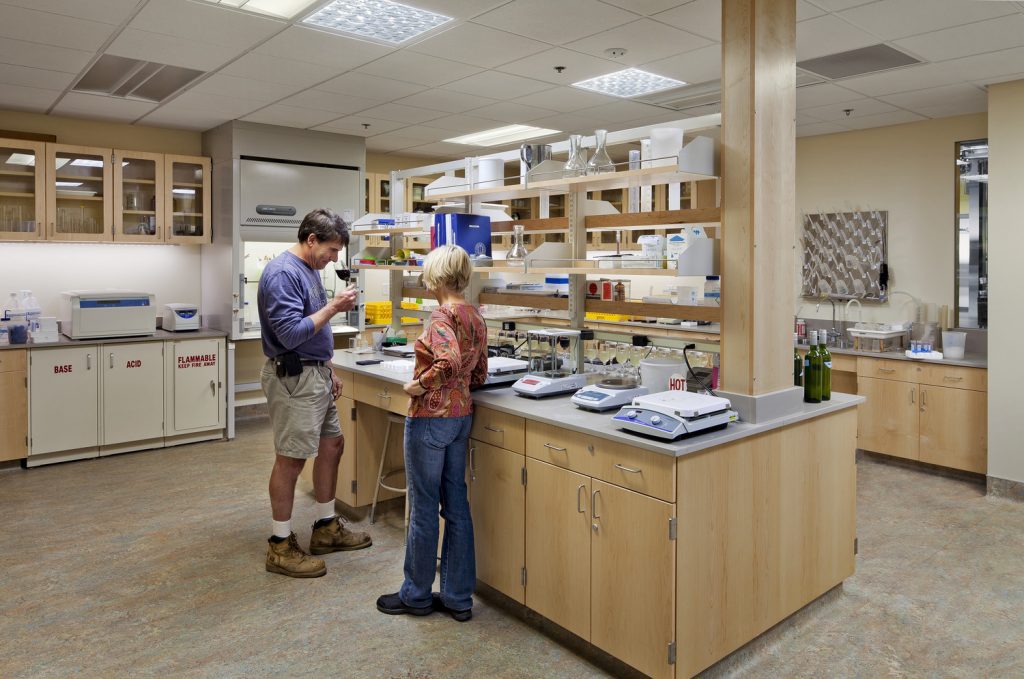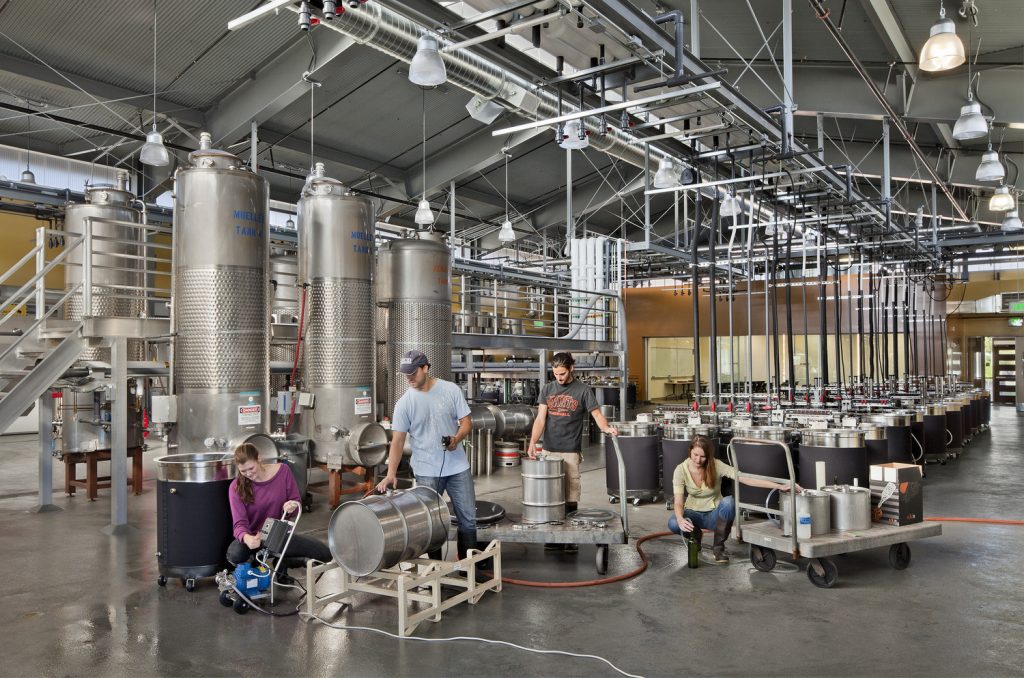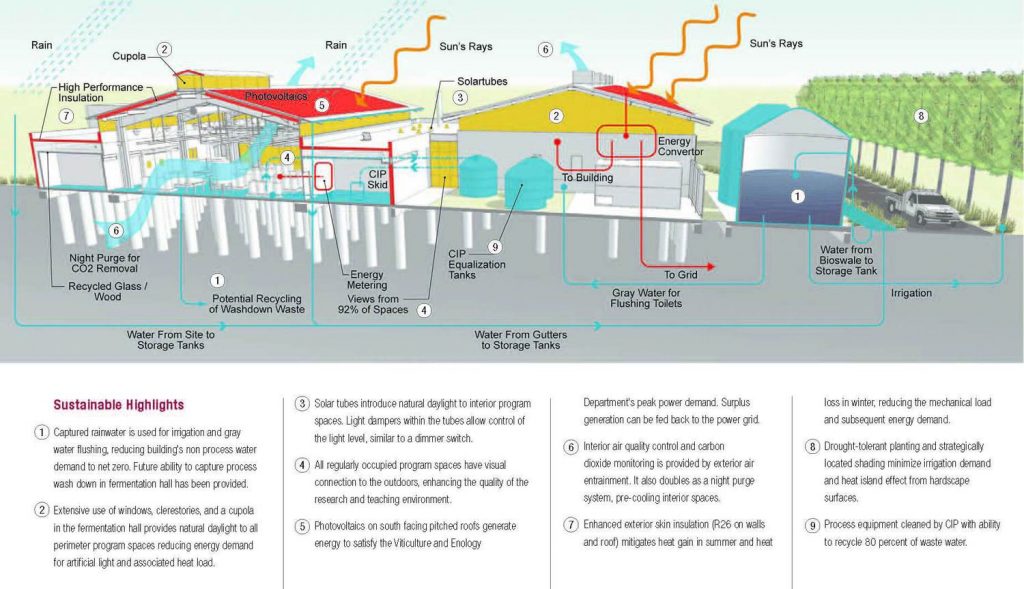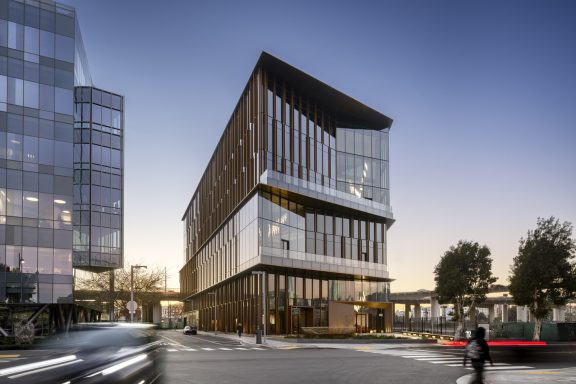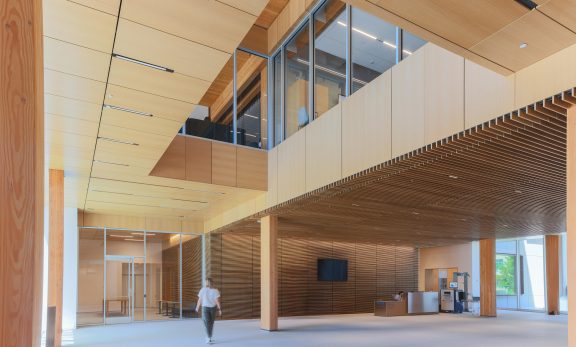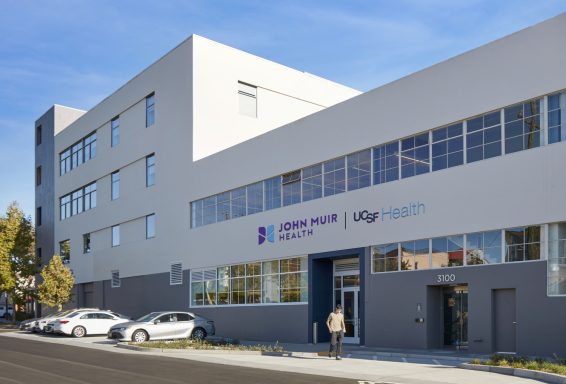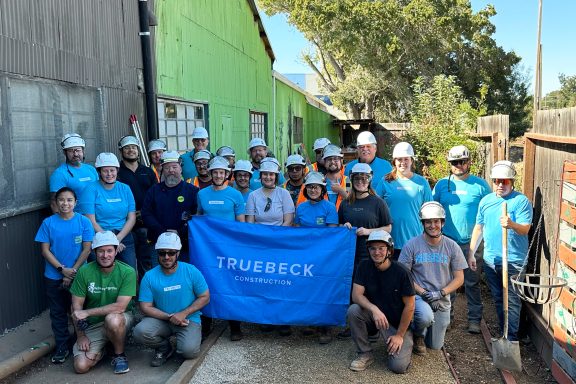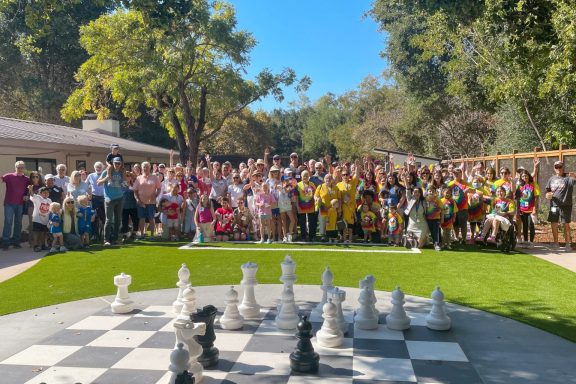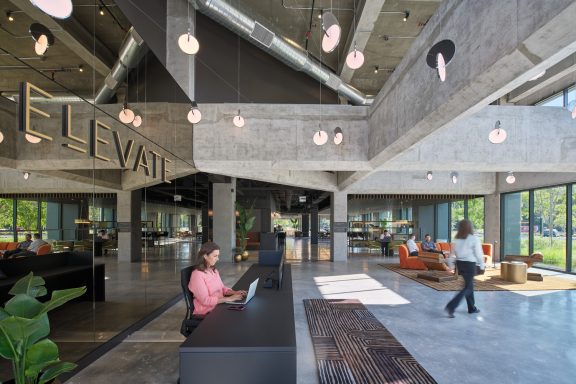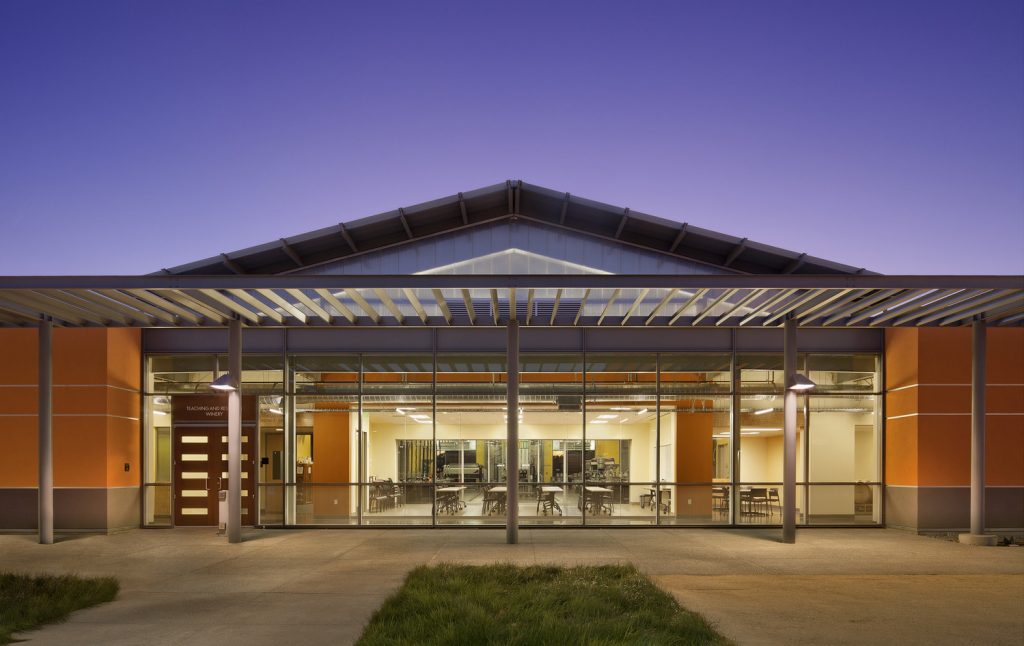
- Press
UC Davis Winery, Brewery and Food Science Building – A World’s First & Industry Game-Changer
Can a project be both high-functioning and environmentally friendly? With climate change an active threat, how can companies build the facilities they want, fit the needs of the end-users, and lessen the impacts on the world around us? You start by building the world’s first LEED Platinum-certified facility in their respective domains—winery, brewery, and food science.
Align the Team with One Mission
The UC Davis Winery, Brewery and Food Science Building started with a unified mission. It was critical to the undertaking to start with the right intentions and partner with a designer and builder who also share that common vision and goal. We wish we could say “the goal was simple,” but it wasn’t. UC Davis had ambitions to create a state-of-the-art research institution and pilot facility for wine-making, brewing, and food processing—which are not known for being easy on the environment—that also reflected the hallmark of sustainability. On average, brewing beer takes seven gallons of water to produce one gallon of beer, and wine making takes 872 gallons of water to produce one gallon of wine. Food science leaves a little more to the imagination, using a variety of production methods and consuming large amounts of energy. That’s why the lofty goal of a LEED Platinum winery, brewery, and food-processing pilot plant had never been done before, until now.
Project Objectives & Opportunities
Key objectives for the project were to monitor water and energy usage, reduce and reclaim waste output, engage with the landscape, and respond to the local climate. Meeting these goals with one user group in mind would be challenging enough, but Truebeck’s team was able to meet these goals for the three user groups the building would serve.
UC Davis’ budget was ambitious with a long list of goals, which included providing flexible spaces to encourage experimentation and innovation, being able to demonstrate standard and evolving systems and technologies, offering variable control of environmental conditions within the building, devising closed systems to reduce cross-contamination risk, accommodating new and existing equipment into the facility, supporting two brewing sessions per day, and meeting FDA standards for food and beverage production. And finally, tying it altogether, was achieving the seemingly impossible given the circumstance—a LEED Platinum certified facility.
How we met LEED Platinum
LEED Platinum is not just the typical photovoltaic panels you can see from Interstate 80, nor the large rainwater collection tanks serving the building. To achieve this highest honor of certification, the project needed to be designed holistically with sustainability in mind—from its connection to community services and the recycled 1920s water aqueduct, to the wood in the winery collections room and the CO2 sensor in the brewery. While a project can achieve LEED on several levels, in order to meet the highest level of Platinum, it must meet almost all of the certification requirements in these categories: location and transportation, sustainable sites, water efficiency, innovation in design, energy and atmosphere, materials and resources, indoor environmental quality, regional priority, and integrative process.
Kelly Wathen, now a Project Executive for Truebeck, reflects back to her days as Project Engineer on the project. She explains, “We had to identify which points on the LEED scorecard we were tracking early on, and design for it. The design-build team of Truebeck and Flad Architects knew we wanted to hit a certain point threshold and to have a cushion to make sure we achieved Platinum once the facility was operating.”
How we earned points in several categories are briefly highlighted:
Sustainable Site and Location & Transportation
The first category focuses on the building site, with our site incorporating the location and transportation category into its function. A half-acre of land was restored into a natural grassland habitat, convenient pedestrian access to public transit or bike parking to encourage alternative transportation, EV vehicle charging stations, native plants, a high ratio of open space, and limited disruption and pollution of natural water hydrology. We minimized the “heat-island” effect with trees, shading and reflective pacing, and highly reflective roof materials. Light trespass from the site was also limited to increase night sky visibility and reduce impact on nocturnal environments.
Water Efficiency
Water for more than one acre of landscape and interior lavatories is provided by the Central Valley’s first large-scale rainwater harvesting system. A non-chemical water treatment system was created for process condenser water.
Wathen says, “The rainwater capture tanks were made to look like grain silos—they blend seamlessly into the agricultural landscape of the area and most people don’t know they are actually for rainwater capture.”
Innovation in Design
The flexible building program combines classroom, winery, brewery, and food lab, as well as the utilization of modular components to adapt to future needs. The multi-billion-dollar food and beverage industry recognizes the need for evolution, to not only save money, but to lessen environmental impacts. Because of this, UC Davis allows corporations to come in and test production practices in their facility to encourage sustainable innovation in the realm. The flexibility of the building not only allows for the three user groups to utilize the space, but for many more to run products through the facility.
Energy & Atmosphere
The facility offers natural ventilation, waste heat recovery, and a high-performance envelope including walls, roof, and windows. It also consists of efficient lighting, high-performing coolers and freezers that avoid chlorofluorocarbon-based refrigerants in equipment, and a rooftop PV array, which combined to reduce energy demands and lessen the buildings damage on the atmosphere and environment. Davis heat averages top 90°F in the summer, yet the building has no air conditioning and still stays cool and keeps food from spoiling based on its smart design.
Materials & Resources
Truebeck collaborated with Flad to evaluate and install several recycled materials into the building. The facility used 10% recycled materials throughout the facility, including reclaimed wood from a 1920s aqueduct for the tasting room ceiling and recycled glass in the concrete floor of the Special Bottle Collections room. Lumber was harvested from sustainably-certified forest operation, recycled content of structural steel approached 95%, and other recycled elements included insulation, ceramic tile, and acoustical tile.
Truebeck also utilized industry waste by-products of fly ash and slag in the concrete to replace 50% of the cement used. This amounted to a reduction of 100 tons of Co2 emissions into the atmosphere.
“We had to be creative with using this concrete mixture because it takes longer to cure than a standard mix. We didn’t let this slow us down – we just worked in other areas as the concrete cured and were creative with scheduling to be able to utilize this less harmful mixture,” Wathen said.
How to utilize LEED principles on every project?
You often hear “The client wants a LEED building, if they can afford it.” from an architect or builder. So how do you make it LEED accessible for every budget? Truebeck performed extensive cost studies, comparing different strategies, products, and LEED credits, to establish what LEED points UC Davis wanted to achieve. Once the goalpost was set, we then influenced design decisions based on those parameters to meet the architect’s vision, end-user goals, and sustainable benchmarks.
Because of Truebeck’s early goal alignment and collaboration with UC Davis and Flad, it enabled the team to make important decisions early that ultimately delivered a higher performing building, saved money, and achieved a best value, first-of-its-kind facility.
